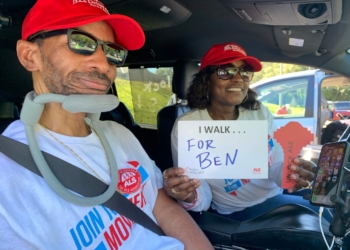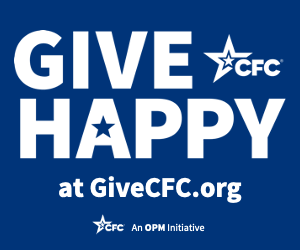A trip to the commissary once meant strapping my toddlers into the double stroller, walking the short mile across Fort Bliss, shopping for fresh fruits and lean meats while making sure I didn’t purchase more than I could carry home.
Fast-forward 10 years and a visit to the MacDill Air Force Base Commissary looks entirely different for my family. My soldier, now a 100% medically-retired combat engineer, makes this shopping trip with me. For us, it takes the better part of a day.
The 30-to-45-minute drive means we are stocking up on the essentials. But it also serves another purpose: the commissary reminds us of our lifelong attachment to the military, even after retirement. Every time we step through the doors, I see more of my husband’s spirit ignite. He lets his guard down, talks to every employee who crosses his path, and radiates joy. Here he knows he will always be a part of this community
More than a grocery store chain
Sophia Hudgins, assistant grocery manager at MacDill, is in the process of relocating to New Mexico where she has accepted a position as store director. She took the time to show me the recent features commissaries have adopted to improve the nutrition quality of our shopping baskets and our diet.
Hudgins, a military spouse, began her career on an overseas assignment as a part-time teller with an MBA. For her, the commissary became a way to achieve her career goals. It’s also a tool to help military families navigate busy schedules that often push self-care to the backburner. It’s easier to make a quick detour through a fast-food window than to plan out nutritional meals, or so we often convince ourselves.
“One to two hours of meal prep a week will save hours in the gym,” Deborah Harris, the Defense Commissary Agency’s (DeCA) dietitian/health and wellness program manager, said. “If you improve the nutrition quality of your diet through dietitian-approved meals, you won’t have to work as hard to counteract the empty calories and high-fat content you’re putting in your body. You may be able to maintain your look while eating fast-food, but it’s doing stuff inside your body that will make it more difficult later in life.”
Mission readiness and resilience
The commissary sees nutrition as an essential part of promoting mission readiness and resilience. But it also reaches further than that according to Harris.
“We assist our service members and families with having a lifetime of health and peace after they have selflessly served this great nation,” she said.
Heart disease doesn’t start the minute it is diagnosed, it is a long process. Protective measures are essential in decreasing the likelihood of future problems. By offering heart-healthy options while in service, the commissary is also working to better the lives of veterans.
From dietitian-approved resources in the form of the Nutrition Guide Program (NGP) to a wealth of educational and actionable steps available on its website, the commissary has a team of nutritional experts working behind the scenes.
The information provided also debunks common myths about nutrition, like these three:
#1: There is too much research involved.
NGP simplies the process by giving shoppers an easy-to-use guide. Simply look for the color-coded labels and the green thumbs up. This signifies the products have been approved by a dietitian. We don’t all have access to a dietitian — and rarely do we think of seeing one for prevention — this small label gives us that access.
According to the website, the program is aligned as closely as possible to Go for Green — a Department of Defense program — and the Marine Corps’ Fueled to Fight nutrition education program that are deployed in the dining facilities. It draws attention to nutrient-dense, high-quality items and makes the education available to the entire family.
#2: I don’t have the skills necessary to make healthy meals.
Both the website and sales flyer provide recipes targeted to the novice cook, using products commonly found in the home. There’s no need to search out rare ingredients or spend hours on Pinterest looking for healthy meals you’ll never make. Simply click here to find options you and your family will enjoy. To make life even simpler, check out the Thinking Outside the Box recipes. You’ll find the ingredients at a special savings in the store.
[See Fajita Bowl for an easy-to-make idea for tonight’s dinner.]
#3: Eating healthy is expensive.
The expense of shopping at the commissary is significantly less than shopping off base.
“I can get two gallons of milk for the cost of one near my house,” Hudgins shared, excusing herself to purchase milk before the registers closed for the night.
Offering a realistic approach to heart-health and nutrition
“We at the commissary take very seriously our part in assisting with supporting the National Defense Strategy and our service members and families to be ready, resilient, and lethal by providing scientifically credible and dietitian-approved food,” Harris said. “Our goal is to assist in improving the nutrition quality of their diets at a savings. Our dietitian approved resources in the form of NGP, the Fueling Stations, recipes on the website and in our sales flyer, teach and encourage the building of a healthy eating pattern that has been shown to be protective against heart disease.”
Today I live over 30 minutes from the closest commissary with a 100% medically-retired veteran, a fixed income, and three ravenous teenagers. The commute is worth every second for the savings and knowledge that I am setting my family up with healthy options.
Heart disease is the leading cause of death for men and women in the U.S., with 647,000 deaths and 805,000 heart attacks every year, according to the CDC. Our family is full of survivors from cancer to strokes to combat-related injuries. Improving heart health is a top priority for me. Thankfully the commissary has taken the wellness of our troops and their families as a vital mission and made the process simple and affordable for all.
Read comments
















































